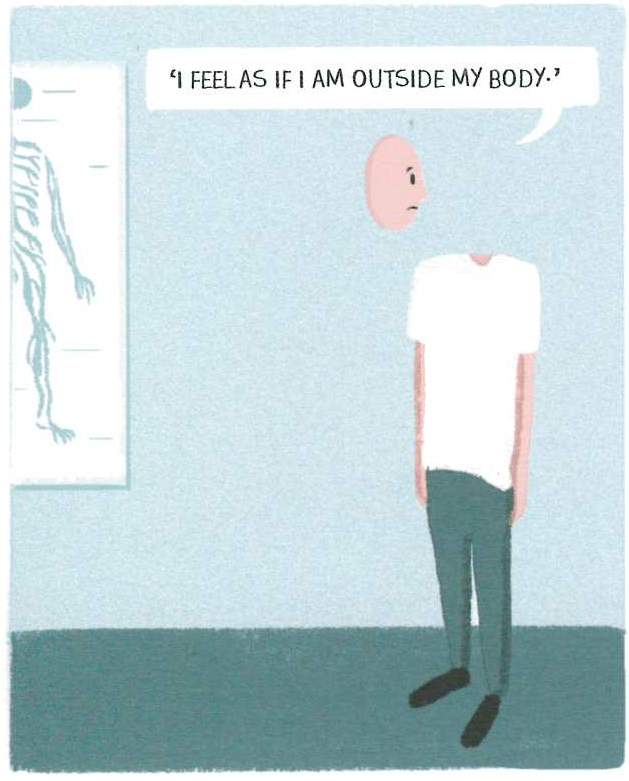A practical guide
What should I look out for?
- The person appears very changeable.
- Someone seems zoned out, uncommunicative, disconnected, disoriented or distant.
- Reports feeling the world around them is unreal or unrecognisable in some way.
- Reports feeling that their body, or part of it, is distorted or unfamiliar or not in their control.
- Notice a sudden shift in their emotion with no obvious trigger.
- Makes lifestyle choices that make it difficult to protect themselves from harm.
- Responds to voices or visions that others do not see.
- Presents as very different people at times (perhaps with different names).
- Not able to remember some important events.
- Seems to lose bits of time.
- Reports out of body experiences.
- Experiences associated with PTSD.
What issues sometimes go alongside dissociative difficulties?
- People with dissociative disorders can appear to have many different problems.
- People can have been given many different diagnoses, often there can be disagreement over what is ‘fact’.
- Trauma stories can sometimes seem vague or subject to change.
- People can appear to function very on the surface or in certain situations.
- Others can label them as ‘liars’ or ‘manipulative’.
- People may not take in information that is given to them.
- People can be suggestible or confused.
- People can feel invalidated by our psychiatric labels.
What can someone else do if the person zones out?
- Call the person’s name.
- Remind the person in a gentle voice where they are and that they are safe.
- Try a discussion about TV, sport, their children.
- Touch them lightly if the person has agreed to this previously.
What can I do to help if a dissociated part of a person’s personality comes out?
- You will know this because the person may change their body language, emotion and even their apparent age, gender or name.
- First accept that this is a valid but different aspect of the person and say hello.
- Ask the person to ‘ask inside’ what the consequences of talking to this part might be. Find out what this part may need to tell you.
- Ask this part what they might need from the ‘main’ person.
- Ask the ‘main’ person to return by grounding the person using their name and grounding objects.
- Be curious, be safe and don’t be confrontational.

- Image from Trauma is Really Strange by Steve Haines. Copyright Steve Haines 2016, Illustrations copyright Sophie Standing 2016. All rights reserved. This image may not be reproduced or transmitted in any form or by any means, electronic or mechanical including photocopying, recording or by any information and storage retrieval system, without prior written consent from the publisher. Reproduced with the permission of the Licensor through PLSclear.
Video
First Person Plural specialises in working for and on behalf of all those affected by Dissociative Identity Disorder (DID) and similar complex trauma-related dissociative identity conditions.
You can access an excerpt from a documentary the group produced below.
Consider more:
u003colu003ern tu003cliu003eAre you aware of any signs that show you are dissociating?u003c/liu003ern tu003cliu003eWhat do you think might help you ground yourself?u003c/liu003ernu003c/olu003e